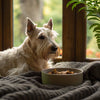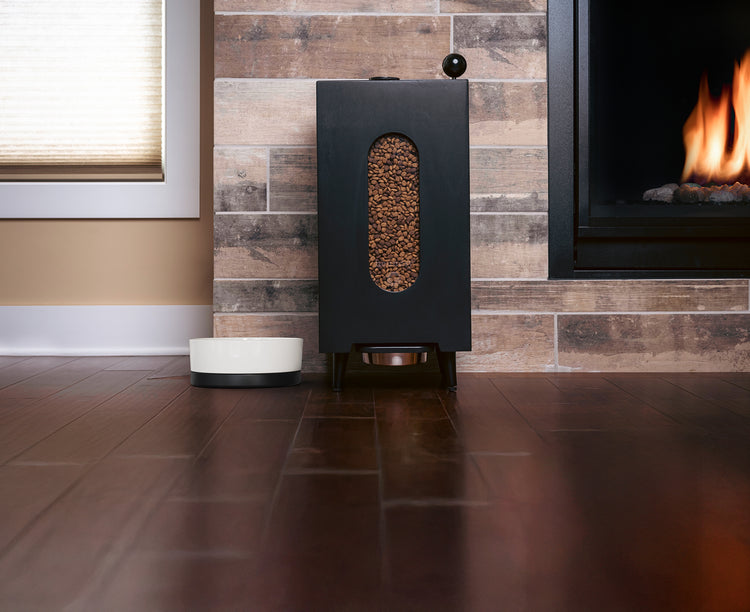Can Adding Water to Dry Dog Food Cause Bloat? A Comprehensive Guide for Pet Parents
- Houndsy
Table of Contents
- Introduction
- Understanding Bloat: What It Is and How It Affects Dogs
- The Role of Dry Dog Food
- Can Adding Water to Dry Dog Food Prevent Bloat?
- Best Practices for Feeding Dogs at Risk of Bloat
- Elevating the Feeding Experience with Houndsy
- Conclusion
- FAQ
Introduction
Have you ever watched your dog bolt down their dry kibble in mere seconds, leaving you wondering if they might be at risk for bloat? You're not alone. In fact, according to veterinary experts, bloat—medically known as Gastric Dilatation-Volvulus (GDV)—affects about 22% to 24% of large and giant breeds during their lifetime. This condition can be life-threatening and occurs when the stomach fills with gas and twists, cutting off blood circulation.
As responsible pet parents, we often look for ways to make mealtime safer and more enjoyable for our furry companions. One common practice is adding water to dry dog food. But the question remains: can adding water to dry dog food cause bloat? In this blog post, we will explore the relationship between wet kibble and bloat, the potential benefits and risks of this practice, and how we can enhance our dogs' feeding experiences.
By the end of this post, we aim to provide you with a thorough understanding of whether adding water to dry dog food is a smart choice or a potential risk. We'll delve into the science behind bloat, share practical feeding tips, and highlight how Houndsy's innovative products, such as the Houndsy Kibble Dispenser, can help elevate your dog feeding experience.
Understanding Bloat: What It Is and How It Affects Dogs
Bloat is a serious condition that occurs when a dog's stomach fills with gas, food, or fluid, leading to a distended abdomen. In some cases, the stomach may also twist on itself, a phenomenon known as torsion. This condition can occur suddenly and often without warning, making it critical for pet owners to recognize signs of distress.
Symptoms of Bloat
Common symptoms of bloat include:
- A visibly swollen abdomen
- Unproductive retching or vomiting
- Excessive drooling
- Restlessness or pacing
- Signs of pain or discomfort
- Rapid breathing or panting
If you observe any of these symptoms in your dog, it's essential to seek veterinary care immediately, as bloat can be fatal within hours if left untreated.
Risk Factors for Bloat
Certain breeds are more predisposed to bloat, particularly large and giant breeds with deep chests, such as Great Danes, German Shepherds, and Boxers. Other risk factors include:
- Eating habits: Dogs that eat quickly or gulp down their food are at a higher risk.
- Exercise: Engaging in vigorous activity shortly before or after eating can increase the likelihood of bloat.
- Feeding practices: One meal a day and elevated feeding bowls have been associated with a higher incidence of bloat.
The Role of Dry Dog Food
Historically, dry dog food has been blamed for causing bloat due to its composition and texture. However, recent studies suggest that the relationship between kibble and bloat is more complex than previously thought.
Does Kibble Cause Bloat?
Research indicates that the type of food may have less impact on bloat than feeding practices. Some studies have shown that kibble containing certain preservatives, such as citric acid, can increase the risk of bloat. However, other ingredients, such as high-fat diets, may also slow stomach emptying, which can exacerbate the risk of GDV.
The Importance of Kibble Size
Interestingly, the size of the kibble may also play a role. Smaller kibble sizes may encourage dogs to eat more quickly, leading to increased air intake and a higher risk of bloat. A study noted that dogs fed larger kibble pieces were 75% less likely to experience a bloat episode compared to those fed smaller kibble.
Can Adding Water to Dry Dog Food Prevent Bloat?
Adding water to dry dog food is a common practice among pet owners, often perceived as a way to make meals more palatable and easier to digest. But does it help prevent bloat?
The Argument for Soaking Kibble
-
Improved Digestion: Soaking kibble before feeding can help break down the food, making it easier for dogs to digest. This is particularly helpful for older dogs or those with dental issues, as softened food can reduce the effort needed to chew.
-
Increased Hydration: Many dogs do not drink enough water throughout the day. By adding water to their meals, we can help ensure they stay hydrated, which is vital for overall health.
-
Enhanced Satiety: Hydrating kibble can create a feeling of fullness without adding calories, which can be beneficial for dogs on weight management programs.
The Risks of Adding Water
-
Potential for Bacterial Growth: When kibble is soaked in water and left out at room temperature, it can create an environment conducive to bacterial growth. This is especially concerning if the food is left out for extended periods.
-
Overeating Risks: Soaked kibble may become more appealing, leading some dogs to eat too quickly or consume larger portions, which can increase the risk of bloat.
-
Soggy Kibble: Some dogs may refuse to eat kibble that has been soaked for too long, leading to waste and potential nutritional deficiencies if they do not consume enough food.
Best Practices for Feeding Dogs at Risk of Bloat
While the addition of water to dry dog food can have both benefits and risks, it's essential to adopt feeding practices that minimize the likelihood of bloat.
1. Feed Smaller, More Frequent Meals
Instead of offering one large meal per day, we can divide our dogs' daily food intake into multiple smaller meals. This approach can help reduce the risk of bloating and improve digestion.
2. Use Slow-Feed Bowls or Puzzle Feeders
To slow down rapid eaters, consider using slow-feed bowls or puzzle feeders that require dogs to work for their food. This helps prevent gulping and reduces the amount of air swallowed during meals.
3. Monitor Exercise Around Mealtime
We should avoid vigorous exercise before and after meals. Allowing at least one hour of rest before and after feeding can decrease the likelihood of bloat.
4. Consult with Your Veterinarian
If you have a dog that is particularly prone to bloat, it's crucial to consult with a veterinarian. They can provide personalized recommendations and may suggest preventive measures such as gastropexy, a surgical procedure that attaches the stomach to the abdominal wall to prevent twisting.
Elevating the Feeding Experience with Houndsy
At Houndsy, we understand the importance of providing a safe and enjoyable feeding experience for our dogs. Our flagship product, the Houndsy Kibble Dispenser, is designed with both functionality and aesthetics in mind.
Key Features of the Houndsy Kibble Dispenser
- Convenient Crank: The standing height crank eliminates the need for bending, making it easy to dispense the perfect portion every time.
- Large Storage Capacity: With a capacity of 25-30 lbs, you can store enough food for multiple meals without the hassle of frequent refills.
- BPA-Free Liner: Our dispenser features a BPA-free liner that helps keep your dog’s food fresh, reducing the risk of spoilage and bacteria.
- Auto-Locking Mechanism: Designed to prevent curious pets or toddlers from accidentally dispensing food, our dispenser offers peace of mind.
By utilizing the Houndsy Kibble Dispenser, we can simplify the feeding process, making it more consistent and visually appealing, while also promoting our dogs' health and well-being.
Conclusion
In summary, while adding water to dry dog food can provide certain benefits such as improved digestion and hydration, it also carries risks, particularly related to bloat. To minimize these risks, we should adopt best practices for feeding, including serving smaller meals more frequently, using slow-feed bowls, and monitoring exercise before and after meals.
By prioritizing our dogs' health and well-being, we can create a feeding experience that is both enjoyable and safe. If you're looking to elevate your dog's feeding routine, consider exploring the Houndsy Kibble Dispenser and our Accessories collection to make mealtime a delightful experience.
FAQ
1. Is it safe to add water to my dog's dry food?
Yes, adding water can be safe, but it's essential to monitor how your dog reacts to the moistened food and avoid leaving it out for long periods to prevent bacterial growth.
2. How much water should I add to dry dog food?
A good rule of thumb is to start with a small amount—about a quarter cup of water for every cup of kibble. Adjust based on your dog's preferences and the consistency they enjoy.
3. Can soaking kibble prevent bloat?
While soaking kibble can aid digestion and hydration, it may not necessarily prevent bloat. It's crucial to implement other feeding practices, such as portion control and slow feeding.
4. What breeds are most at risk for bloat?
Large and giant breeds, particularly those with deep chests, are at a higher risk for developing bloat. Breeds like Great Danes, German Shepherds, and Boxers are particularly vulnerable.
5. Should I consult a veterinarian about feeding practices?
Absolutely! If your dog is at risk for bloat or if you have any concerns about their feeding habits, consulting with a veterinarian is the best course of action.












